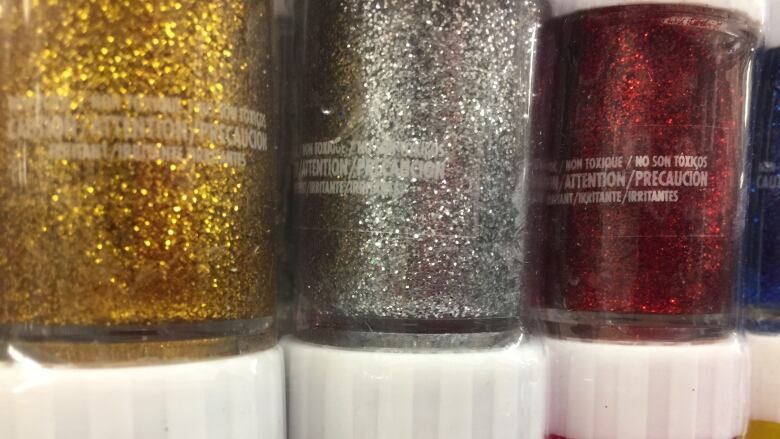No more microplastic sparkles: Richmond art centre bans glitter to protect environment
'It might be a small thing but it certainly builds up, says woman who spearheaded ban

If glitter seems like a nightmare to clean up at home, just imagine what it does to the environment.
That's why a city-run art centre in Richmond is banning the sparkly, microplastic sprinkles.
The ban on glitter startedMonday.
"I think we're all just becoming a lot more alert to things that we never particularly thought about before," said Loraine Wellman, who spearheaded the ban.
"It might be a small thing but it certainly builds up."
Wellman, an artist and vice-president of the Richmond ArtistsGuild, said she decided to propose the idea after learning about similar glitter bans at preschools in Britain.
She brought up the idea at the Richmond Arts Centre meeting and was surprised at the positive reaction from the leadership.
"[The director] met with the art instructors at the art centre and they decided then and there to just ban it," she told CBC's On The Coast.
"City hall is still looking into it ...they're looking into possible substitutions for it and that kind of thing."
One more form of protection
Any kind of plastic pollution is bad for the environment and microplastics like glitter can be particularly harmful, according to scientists.
Brian Hunt, a biological oceanographer with UBC's Institute for the Oceans and Fisheries, explained that glitter ends up in the ocean where it gets eaten by animals.
"It's the smaller plastics that are invisible to the naked eye, at least from afar, that are really impactful because they can be consumed from zooplankton [organisms that live in the water]," he said.
"Zooplankton are the base of the marine food web and they are really supporting most of the animals that we care about in the ocean whether it's herrings or salmon or whales or sea birds."
In his research, Hunt hasn't noticed glitter particularly as a pollutant the most abundant is microfibres coming from clothing but said any reduction of plastics entering the ocean is a good thing.
That's the message Wellman is focusing on as well.
"It strikes me that if we're worried about plastic straws and recycling our yogurt containers,glitter is something that's really easy to get rid of," she said.
"We're trying to dowhat we can."
With files from On The Coast












_(720p).jpg)


 OFFICIAL HD MUSIC VIDEO.jpg)
.jpg)



























































































